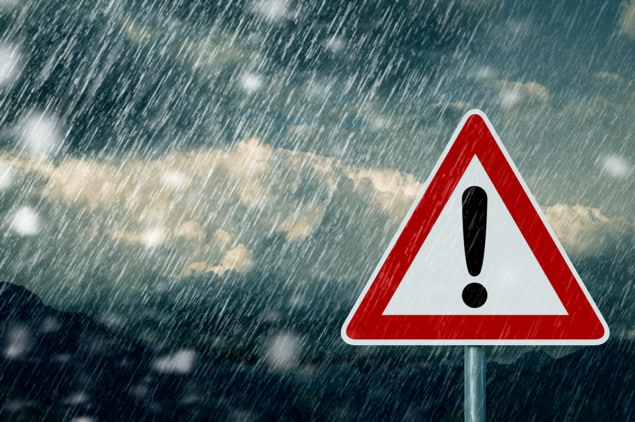
Autonomous vehicles (AVs) are supposed to be the future. So far, though, much of the work involved in building that future has focused on places like California and Arizona, where rain is rare and roads are wide and spacious. How, then, will AVs cope in the harsher conditions of northern Europe?
For Patrick Sachon, the question is more than hypothetical. As a scientist working in business development at the Met Office, Sachon is trying to understand whether the sensors that AVs use to navigate can do their job adequately in the UK’s famously unsettled weather. If the answer is “no” – or, more likely, a provisional “yes” that depends on weather conditions remaining within a certain safety envelope – then he and his colleagues aim to suggest improvements and explain to regulators what safe use looks like.
Speaking as part of a webinar series organized by the National Physical Laboratory, Sachon noted that the Met Office (the UK’s national weather service) has collaborated with partners in the road transport sector for years. “We’re always working on understanding what roads will be like to drive on,” he explains. While the Met Office’s publicly-funded forecasts are (usually) good enough for citizens to decide whether they need to pack an umbrella, the Highways Agency and local authorities need far more detailed information to help them deploy assets such as gritters, snowploughs and maintenance crews in an optimal way.
The Met Office’s experience of providing such information is useful for AVs, Sachon says, because such vehicles may require similar micro-forecasts to operate safely. As he puts, it, the “structure of precipitation” varies a lot during thunderstorms or heavy showers. While some areas experience high rain rates, others nearby remain relatively dry. And if AV sensors work fine in ordinary rain, but not when it’s chucking it down, then the basic, publicly-available weather forecasts won’t be enough to keep motorists safe.
As Sachon sees it, the key will be to develop vehicle sensors that work alongside weather sensors. The joint information from both types of sensors will then enable regulators and manufacturers to determine exactly how well – and how safely – an AV’s sensors will handle a given set of conditions. Such information will be helpful to the Met Office, too, Sachon adds, because vehicle-based weather sensors are a bit like miniature weather stations. For example, if Met Office scientists see that an AV’s windscreen wipers are on, they’ll know that moisture in the atmosphere is making it down to ground level – something that weather satellites don’t necessarily show. The scientists can then modify their forecasts accordingly, to more accurately reflect local driving conditions.
When asked which weather conditions are most challenging to AV sensors, Sachon began by reminding listeners that human-operated vehicles have drawbacks of their own. “[Artificial intelligence] won’t do the stupid things we do when we drive,” he said. “You can eliminate quite a lot of risks.” With that caveat, though, he acknowledged that AV sensors struggle when precipitation changes phase. While rain and snow are not so difficult on their own, he said, “the transition between phases can be quite a problem”.
Since the UK’s weather often hovers between fog, mist, drizzle, rain and snow, would-be AV purchasers in these islands may be in for a long wait. Another challenge is that hyper-local weather forecasts are not cheap, and it is far from clear who within the AV sector would pay for them. The equivalent service in aviation, Sachon notes, is paid for via a levy on all airlines that fly through UK airspace, with a small fraction of that levy going to the Met Office. In ground transport, however, the focus has traditionally been around keeping roads clear of ice and snow, and the burden of payment has fallen on local authorities rather than individual motorists. Whether any government – local or national – will take on those costs for the sake of an (initially) small number of AV users is, he suggests, an open question.



